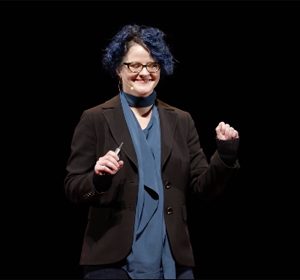 Emily Nagoski pens the popular sex blog, TheDirtyNormal.com, and teaches a course on Women’s Sexuality at Smith College. In her new book, Come as You Are: The surprising new science that will transform your sex life (Simon & Schuster, 2015) Nagoski explores the whys and hows of women’s sexuality, based on groundbreaking research and brain science.
Emily Nagoski pens the popular sex blog, TheDirtyNormal.com, and teaches a course on Women’s Sexuality at Smith College. In her new book, Come as You Are: The surprising new science that will transform your sex life (Simon & Schuster, 2015) Nagoski explores the whys and hows of women’s sexuality, based on groundbreaking research and brain science.
She debunks some of the common sexual myths that make many women (and some men) feel inadequate in the bedroom. A few of her ideas are summarized here.
* * *
For women in particular, explains Emily Nagoski, desire is very context-sensitive. Desire doesn’t come solely by lightning bolt that possesses and torments you. It can kick in when you have created a context that allows your body to feel safe, in which you can laugh, and where you are open to accepting the pleasures (even small or unfamiliar ones) you are currently experiencing. From that acceptance of pleasure, you will open up more — and soon feel full-blown desire and arousal.
Nagoski speaks of a dual control model in the female sexual response mechanism, one that includes both accelerator and brakes. The accelerator responds to sexually relevant information surrounding us (anything you see, hear, touch, smell, taste, or imagine that your brain codes as “sexually relevant”) and sends the “turn on” signal.
The same mechanism has brakes which respond to anything in the environment the brain perceives as potentially threatening (fear of STDs, unwanted pregnancy, or loss of social reputation; past trauma; sexual shame; body self-criticism), and promptly sends a “turn off” signal. The process of becoming aroused involves not only the process of activating the “ons,” but also deactivating the “offs.”
Nagoski speaks of a normal bell curve distribution regarding the over-sensitivity or insensitivity of these two mechanisms, with most of us heaped up somewhere in the middle. She emphasizes that we have more control over that sensitivity than we are aware. “From the moment we are born, our brains are learning what to count as sexually relevant and what to evaluate as a potential threat; because this is learned information, we can also unlearn these things. “
There is much that is not implicitly sexual — so much is culturally determined and inculcated — so just as we have learned, we can unlearn and teach our brains something new.
Nagoski makes an important distinction between sexual responsiveness and sexual pleasure. The first is physiological: something “sexually relevant” (a naked person, a sexual thought or touch, etc.) can cause physical signs of arousal in our body. But it is possible to respond physiologically to something “sexually relevant,” while still finding it gross and repugnant, and as a result, to be unable to find pleasure in the sexual activity.
“One can learn to have sex the same way one learns to dance,” Nagoski tell us. “You just have to get out there and find somebody you can laugh with, and step on each other’s toes and be ok with it and learn.”
Nagoski, TED talk at the University of Nevada
“The keys that can open the door to your authentic sexuality”
